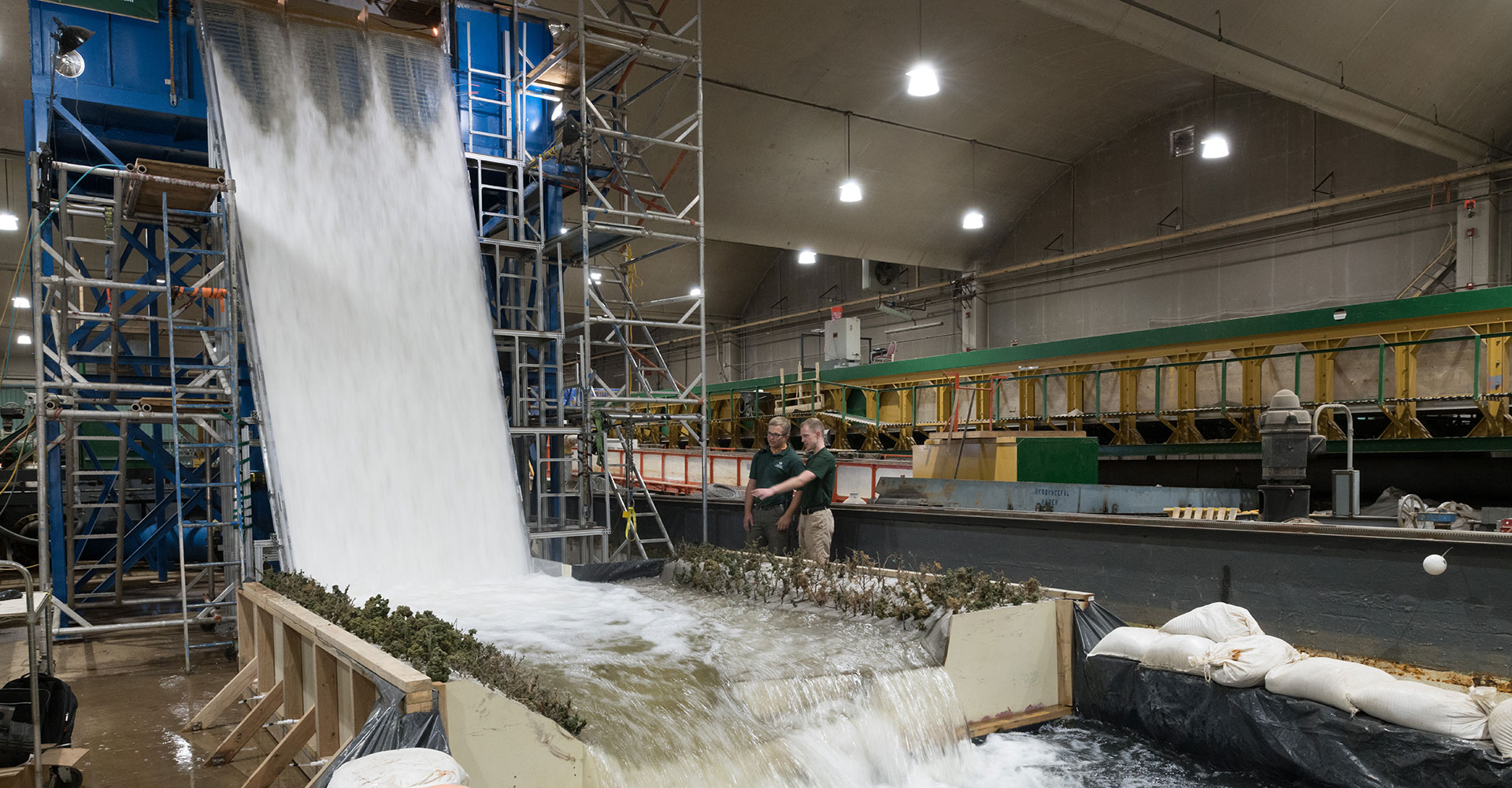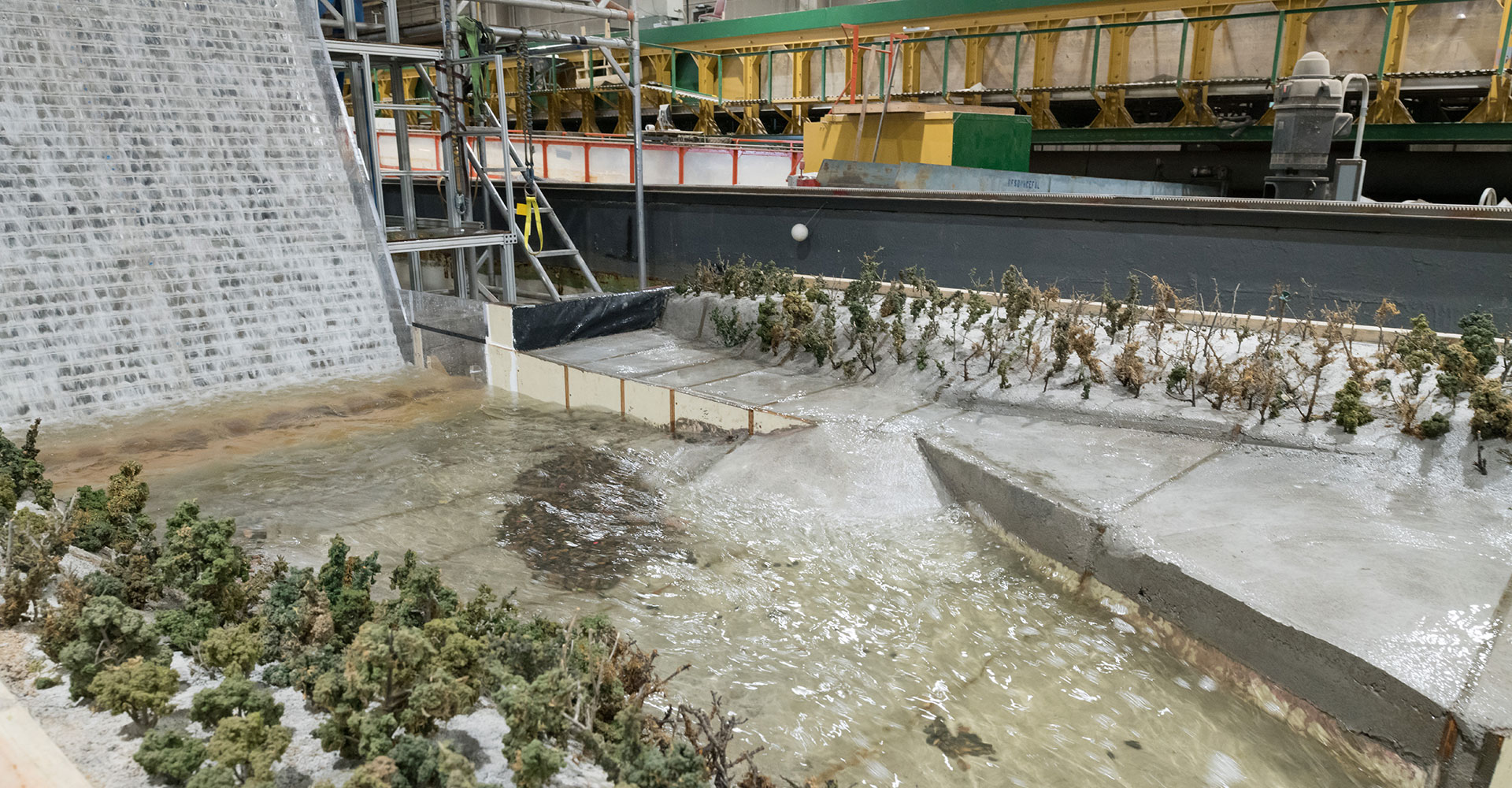Gross Dam spillway design being put to the test by CSU civil engineers
On any given day, the roar of water cascading over a 20-foot-high dam spillway greets visitors to Colorado State University’s Hydraulics Laboratory. Muck boots are required footwear, as water from the spray spreads across the floor, drains into an under-floor reservoir, and flows back toward an outtake pipe for recycling.
The experimental spillway, constructed by CSU civil engineers, is a test bed for an ambitious dam-raising project in southwest Boulder County by Denver Water. CSU engineers are applying their hydraulics expertise to help verify key design and functionality aspects of the spillway, part of the public utility’s planned upgrade to Gross Dam. The reservoir impounded by Gross Dam provides water to more than 1.4 million residents along Colorado’s Front Range.
The engineering team designing the project for Denver Water, Stantec and primary subcontractor AECOM, commissioned civil engineering professors Chris Thornton and Rob Ettema to create a 1:24 working scale model of the heightened dam’s new spillway. The spillway is the only portion of the dam over which water passes.
A project of this magnitude requires a physical hydraulic model, Thornton said.
“Computers have come a long way, but they’re not even close to being able to resolve what’s happening in terms of interaction of forces,” Thornton said. “Turbulence and air entrainment are very hard to model accurately.”
CSU researchers spoke about their work with representatives from Denver Water, who visited campus to film the Gross Dam spillway model. Learn more.
Stepped spillway
Taylor Hogan, a civil engineering master’s student and Hydraulics Laboratory manger, led the design and building of the model, which required close to 500 custom-built pieces. It is called a stepped spillway, which dissipates energy from the water as it flows over the dam. The steps slow the water, trap air bubbles, and allow water to safely descend. Adding to the model construction’s complexity is a slight arch to the spillway profile – mimicking the current profile.
The CSU engineers are now testing and documenting performance, including capacity, flow rate, and ability to handle a major influx of water from a storm or natural disaster. When complete, Gross Dam’s will be the tallest stepped spillway in the United States.
The planned height of the dam necessitated the stepped design. The dam is slated to be raised 131 feet over its current height of 340 feet, increasing the capacity of Gross Reservoir by about 25 billion gallons.
“The expansion will allow Denver Water to add balance and resiliency to its water collection system, which today is at risk of damage from natural disasters such as wildfires and floods,” said Jeff Martin, Denver Water’s Gross Reservoir Expansion Project program manager. “It will also help to manage the greater uncertainty that comes with a changing climate.”
The Stantec/AECOM team specified that the spillway be able to manage extreme high flows they estimate to be possible during the rare occurrence of a massive storm.
“The spillway is designed very conservatively and must perform safely when exposed to extreme conditions,” Ettema said.

Engineering students Taylor Hogan and Blake Biethman stand next to the Gross Reservoir expansion stepped spillway model, Sept. 9, 2019.
Remaining work
The CSU researchers are wrapping up the modeling work for Stantec/AECOM to complete the spillway design. The remaining work includes optimizing the layout of the energy-dissipation basin at the bottom of the spillway, to ensure Gross Dam’s design meets safety requirements. Design engineering on the overall dam project is expected to extend through the end of 2020.

Water flows through the stilling basin at the bottom of the spillway model.
The spillway is the only portion of the dam over which water passes. Here’s 11 seconds of the model in action.